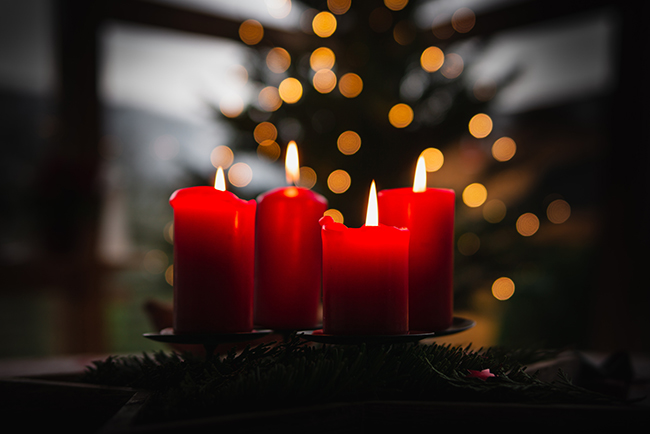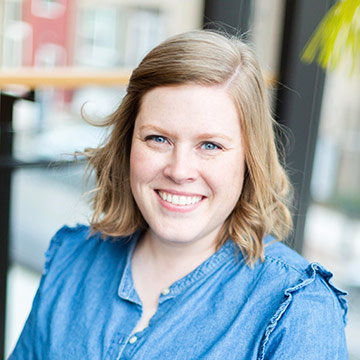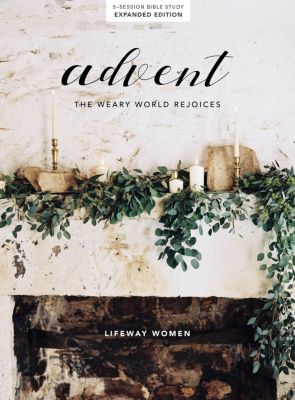
Whether or not your church participates in Advent traditions, this season can be one of reflection, thanksgiving, and hope.
By Elizabeth Hyndman
When I was growing up in church, we didn’t talk much about Advent. We sometimes lit candles or marked off days in a calendar, but the word “Advent” was somewhat foreign to me. Now, however, Advent has become part of the cultural zeitgeist.
Churchgoers look forward to celebrating Advent in their church services and through devotionals and Bible studies at home. Even non-churchgoers look for the perfect Advent calendar to anticipate Christmas Day. In these instances, I’m reminded of The Princess Bride: “You keep using that word. I do not think it means what you think it means.”
Advent, the word, simply means “the arrival.” For Christians, we celebrate between two Advents—the arrival of the Messiah on earth and the second coming of Christ. Advent, the event, is a season on the church calendar when we participate with the ancient Israelites and saints throughout history in anticipation of the Promised One.
Traditionally, Advent is celebrated beginning the fourth Sunday before Christmas and going until Christmas Day. The rituals and traditions associated with Advent are both ancient and fluid, but the point of all the calendars and candles and carols is to celebrate the Messiah, to reflect on the Word made flesh, and to point us all to the hope we have only through Christ.
“The traditions associated with Advent are both ancient and fluid, but the point is to celebrate the Messiah, to reflect on the Word made flesh, and to point us all to the hope we have only through Christ.” — @edhyndman Click To TweetLighting Advent candles
In churches around the world, throughout history, Christians have lit Advent candles as a reminder that “the people walking in darkness have seen a great light; a light has dawned on those living in the land of darkness” (Isaiah 9:2, CSB). Typically, churches light one candle each Sunday of Advent, representing the hope, peace, joy, and love of Christ. The order varies across churches and traditions, but the final, fifth candle is the Christ candle, lit on Christmas (or Christmas Eve, if your church does not meet on Christmas).
The lighting of the Advent candles can serve several purposes for your church. First, it can provide time for your congregation to rest and reflect. In the hustle and bustle of the Christmas season, any quiet, still moment is a respite. Typically, Scripture is read and a prayer time follows, perhaps focusing on the theme of the week—the hope, peace, joy, and love Christ brings to us and we pass on to our neighbors.
Second, this time can be used to emphasize your church family. Many churches will appoint a different family each week to light the candle, read a passage, and pray. Some may even provide a short devotional thought. Families celebrate holidays together. And Advent is no different. Seeing families together at the Advent wreath is a display of the church family celebrating together.
“Seeing families together at the Advent wreath is a display of the church family celebrating together.” — @edhyndman Click To TweetOne small note as you consider families to participate in this moment in your services: Choose families who represent your congregation. Think of families with older kids, with younger children, single men and women, college students, etc. All are part of your church family and seeing themselves reflected in the service can be meaningful to those who are sometimes forgotten in the more traditional “family” moments.
Celebration and anticipation
Advent traditions are also a reminder of the greater church family. As you are participating in lighting a candle in your church in your city in the 21st century, you are carrying on a tradition observed around the world for centuries. We remember the story didn’t begin with us, and we remember the story isn’t over—one day He will come again to right every wrong.
The Advent moment in services also works to build anticipation together. Ever since Genesis 3, all of creation has been longing for Advent. They were longing for the first coming of Jesus, the One who was promised, the One who would redeem their lives, the One who would fulfill the covenant promise. Enslaved, exiled, exhausted, they looked forward to the Messiah. Advent offers us a time to remember that longing.
We, as 21st century believers, live between the two Advents. In this way, it is both a celebration and an anticipation. We celebrate the Messiah, the One promised to a world weary in sin. We, weary ourselves in this world broken by sin, anticipate the second coming when everything will be made new.
“With Advent, we remember the story didn’t begin with us, and we remember the story isn’t over—one day He will come again to right every wrong.” — @edhyndman Click To TweetWhether or not your church participates in Advent traditions, this season of remembering and waiting can be one you and your family look forward to and remember each year as a time of reflection, thanksgiving, and hope. Reading passages of Scripture in the Old Testament pointing forward to Jesus cultivates a trust in us—our God keeps His promises.
Reading the New Testament story of Jesus’s birth and life on earth reminds us of God’s love for us. God loved us so much He sent His Son. Jesus is God with us, Immanuel. With us, one of us, known by and knowing us. How loved we are!
Light in the darkness
Lighting candles, whether at home or at church, in the darkest time of year (for those of us in the Northern Hemisphere) is a visual reminder of the light that darkness cannot overcome. Prayer for those still living in that darkness—whether the spiritual darkness of living without hope or the physical darkness of living in a broken world—can be a catalyst for evangelism, compassion, service, and gratitude in your own heart and home.
There is nothing particularly magical or holier about these four weeks each year. But as we approach Christmas, these weeks offer an opportunity for us to remember and wait, to celebrate and anticipate. In doing so, we are participating with saints of old and around the world, with our church family, and in our own hearts and homes, in the hope, peace, joy, and love of our Savior.
For permission to republish this article, contact Marissa Postell Sullivan.












